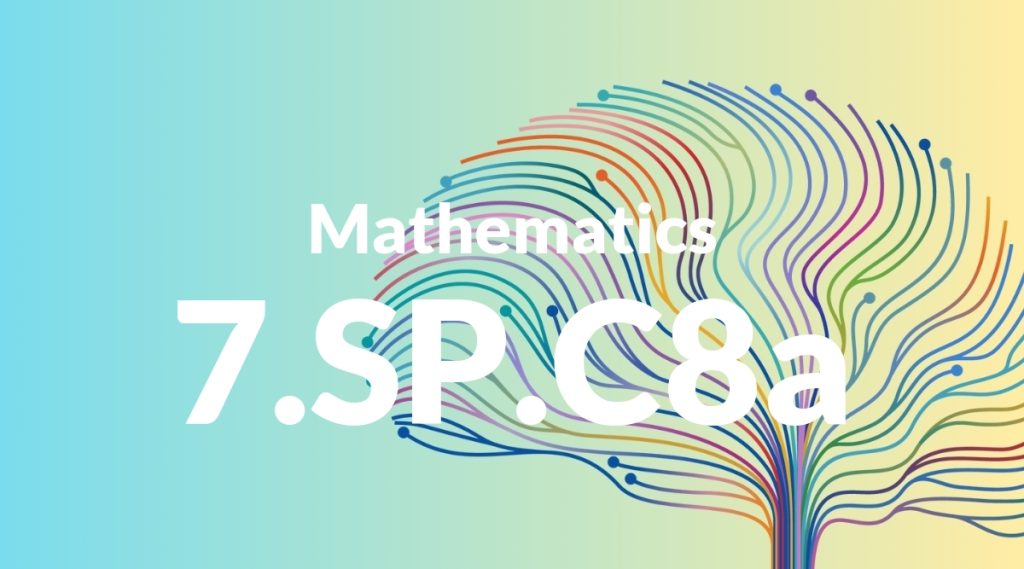Standard: 7.SP.C8a – Understand that, just as with simple events, the probability of a compound event is the fraction of outcomes in the sample space for which the compound event occurs.
Grade level: Grade 7
Subject: Mathematics
Domain: Statistics & Probability
Teacher Overview
This standard focuses on understanding the probability of compound events by analyzing the fraction of outcomes in the sample space where the compound event occurs. It’s crucial for students to grasp this concept as it builds on their knowledge of simple probability and prepares them for more advanced probability topics. Students should be comfortable with basic probability concepts, including calculating the probability of single events and understanding sample spaces. They should also be familiar with multiplication and addition of fractions.
Once students master this standard, they will be equipped to tackle more complex probability problems, including those involving conditional probability and dependent events, further enhancing their analytical skills in statistics and probability.
Common Misconception 1
A common misconception is that students may believe the probability of a compound event is the sum of the probabilities of individual events. This is incorrect because the probability of compound events involves the multiplication of probabilities for independent events.
Intervention 1
To address this misconception, use tree diagrams to visually represent the outcomes and how they combine. Reinforce the idea that for independent events, the probabilities multiply.
Common Misconception 2
Another misconception is that students might think the probability of a compound event is always lower than the probability of individual events. This is not always true, especially in cases of overlapping events.
Intervention 2
Use Venn diagrams and real-world examples to show situations where the probability of a compound event can be higher. Highlight scenarios with overlapping events to clarify this concept.
Prerequisite Knowledge
Students should have a foundational understanding of simple probability, including the ability to calculate the probability of single events and understand the concept of a sample space.
Subsequent Knowledge
After mastering this standard, students will be able to apply their understanding of compound events to more complex probability problems, including those involving independent and dependent events and conditional probability.
Instructional Activities
- Create tree diagrams for various compound events.
- Simulate compound events using dice, cards, or spinners and calculate probabilities.
- Use online probability simulators to visualize outcomes.
- Solve real-world problems involving compound events in small groups.




